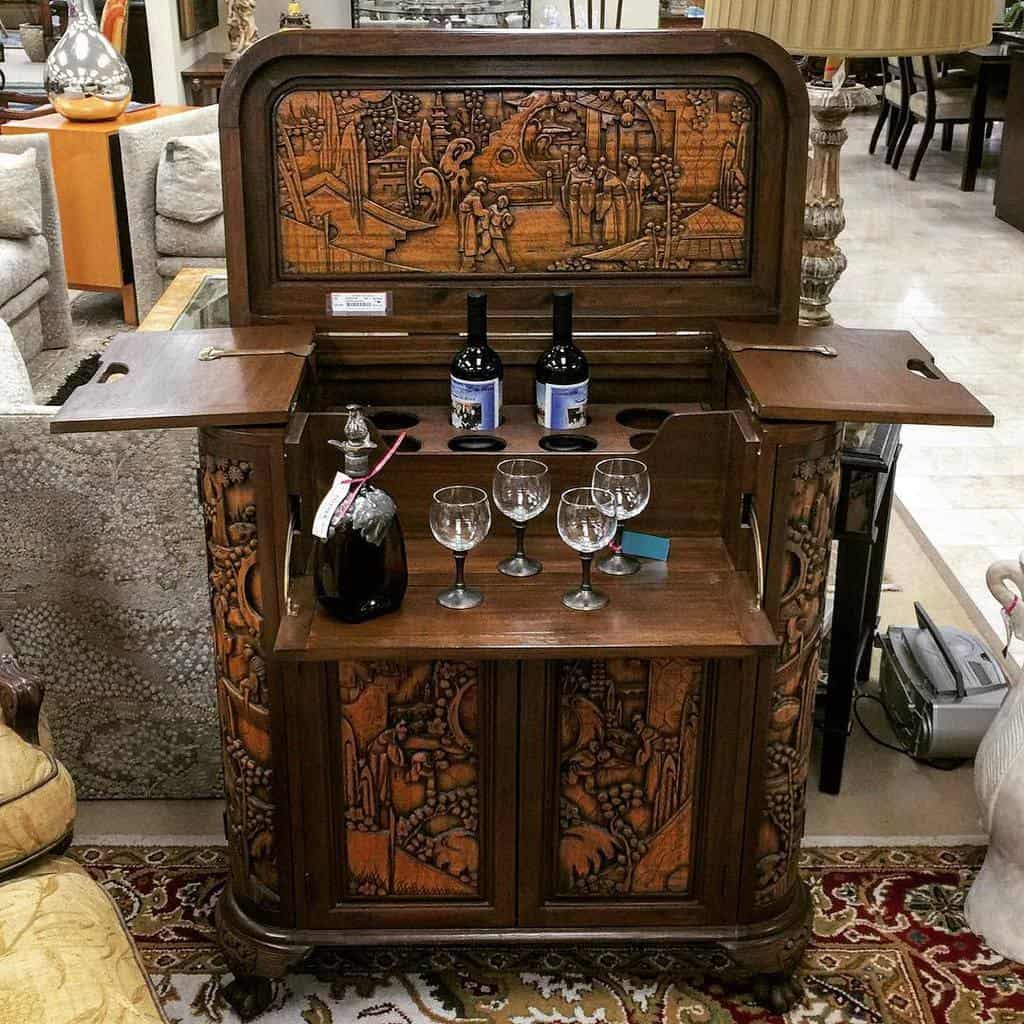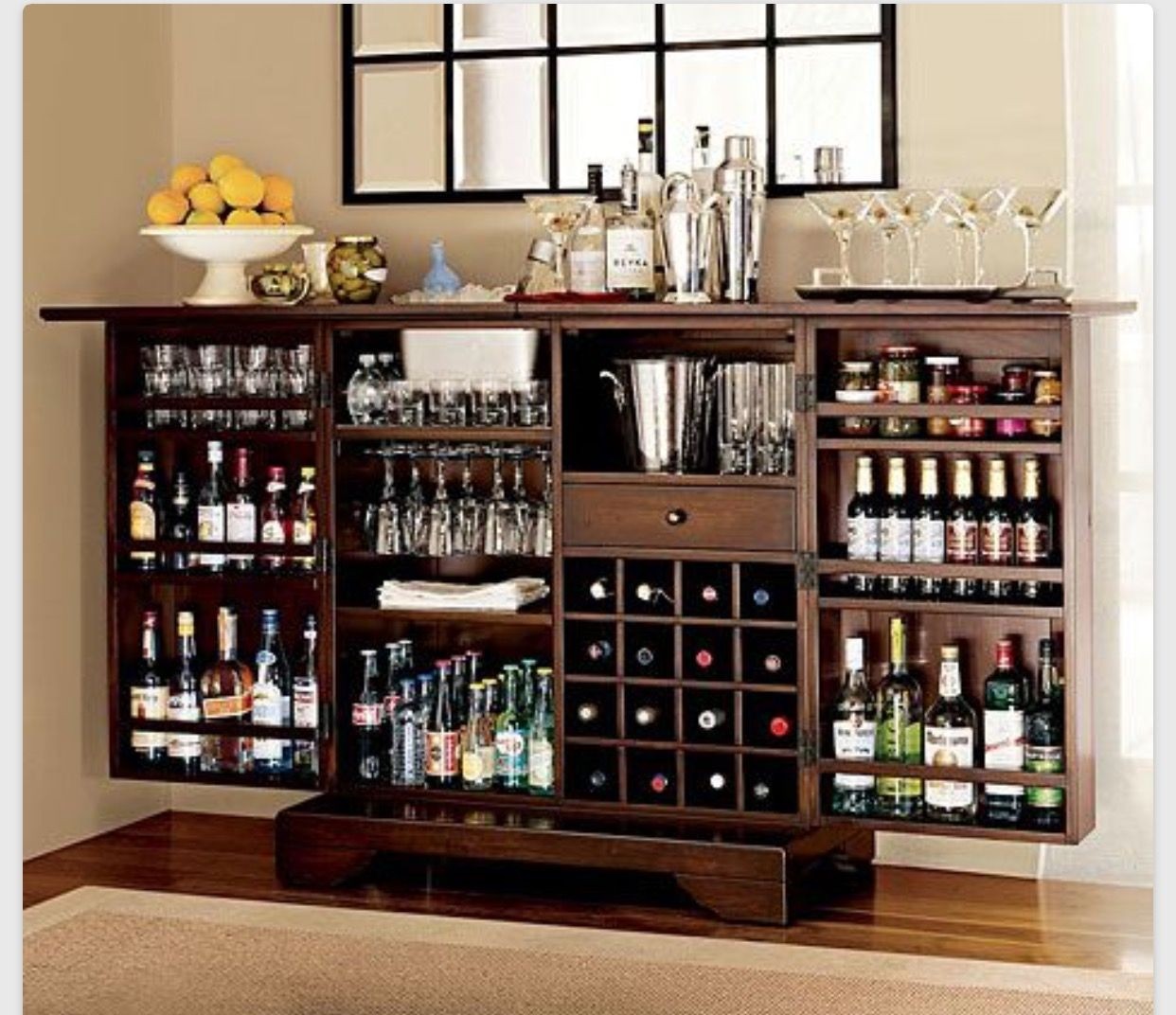History and Origin

Walnut liquor cabinets have a rich history, intertwined with the evolution of both furniture design and the social customs surrounding drinking and entertaining. Their origins can be traced back to the 18th century, a period when the appreciation for fine furniture and sophisticated gatherings gained momentum.
Antique walnut liquor cabinet – The use of walnut wood, known for its beautiful grain and durability, played a crucial role in the development of these cabinets. Over time, craftsmanship and design evolved, reflecting changing styles and tastes. From the simple, utilitarian designs of the early 18th century to the elaborate, ornate pieces of the Victorian era, walnut liquor cabinets became a symbol of status and refinement.
An antique walnut liquor cabinet, with its rich, dark wood and intricate carvings, can be a statement piece in any home. While its function might be primarily for storing spirits, it also serves as a conversation starter, drawing attention to its historical significance.
Similarly, an antique Chinese corner cabinet, like those found at this website , showcases a different kind of artistry. These cabinets, often crafted from exquisite hardwoods and adorned with delicate hand-painted designs, represent a unique blend of tradition and craftsmanship.
Both antique walnut liquor cabinets and antique Chinese corner cabinets, though different in origin and purpose, share a common thread: they are tangible pieces of history that hold a timeless appeal.
Notable Makers and Regions
The craftsmanship of antique walnut liquor cabinets was often associated with specific regions and makers. Some notable examples include:
- American Colonial Period: Early American cabinetmakers, particularly in regions like New England and Pennsylvania, were known for their practical and functional designs. They often used walnut wood, which was readily available in these areas. The cabinets from this period often featured simple, understated designs with a focus on functionality.
- Victorian Era: The Victorian era witnessed a surge in the popularity of ornate and elaborate furniture. Walnut liquor cabinets from this period often featured intricate carvings, inlaid wood, and decorative metalwork. Notable makers of Victorian walnut liquor cabinets include:
- Herter Brothers: This renowned New York-based furniture firm was known for its exquisite craftsmanship and luxurious designs. Their walnut liquor cabinets were often adorned with intricate carvings, gilded accents, and luxurious finishes.
- John Henry Belter: Belter was a prominent American furniture maker who specialized in creating highly ornate pieces using laminated wood. His walnut liquor cabinets were known for their intricate curves, delicate carvings, and elegant designs.
- European Influence: European cabinetmakers also played a significant role in the development of walnut liquor cabinets. The French, known for their elegant and refined designs, produced some of the most exquisite examples. English cabinetmakers were also known for their craftsmanship and attention to detail. The use of walnut wood was prevalent in both regions, contributing to the enduring popularity of these cabinets.
Characteristics and Features

Antique walnut liquor cabinets are a testament to craftsmanship and elegance. Their enduring appeal lies in the rich history they embody and the intricate details that adorn them. The walnut wood, with its distinctive grain patterns and warm hues, plays a pivotal role in shaping the cabinet’s aesthetic and functional qualities.
Materials and Craftsmanship
Walnut wood, prized for its strength, durability, and beauty, is a defining feature of antique liquor cabinets. Its rich brown tones, often with intricate grain patterns, add a touch of sophistication and warmth to any space. The wood’s natural resistance to warping and cracking ensures the longevity of the cabinet. The craftsmanship involved in creating these cabinets is equally impressive. Skilled artisans meticulously select and prepare the walnut wood, employing traditional techniques like hand-planing and dovetail joinery to construct sturdy and durable structures. The attention to detail is evident in the intricate carvings, inlays, and hardware that often adorn these cabinets.
Styles and Variations
Antique walnut liquor cabinets exhibit a range of styles, reflecting the diverse tastes and trends of their eras.
Hardware
The hardware used on antique liquor cabinets is a significant element that contributes to their overall aesthetic.
- Brass Hardware: Often found on Victorian-era cabinets, brass hardware adds a touch of opulence and warmth. The brass can develop a rich patina over time, enhancing its character.
- Nickel Hardware: Popular in the early 20th century, nickel hardware offers a more modern and understated look. Its sleek finish complements the walnut wood beautifully.
- Iron Hardware: Antique liquor cabinets sometimes feature iron hardware, particularly those crafted in the Arts and Crafts style. Iron hardware adds a rustic and industrial feel to the cabinet.
Carvings
Intricate carvings are a hallmark of many antique walnut liquor cabinets.
- Floral Motifs: Delicate floral carvings, often found on Victorian-era cabinets, add a touch of romanticism and elegance.
- Geometric Patterns: Geometric carvings, common in Art Deco cabinets, bring a sense of order and symmetry.
- Animal Motifs: Some antique liquor cabinets feature animal motifs, such as birds or lions, adding a touch of whimsy and symbolism.
Inlay
Inlay, the art of embedding materials into a surface, is another common feature of antique walnut liquor cabinets.
- Ivory Inlay: Ivory inlay, often used in Victorian-era cabinets, adds a touch of luxury and intricate detail.
- Mother-of-Pearl Inlay: Mother-of-pearl inlay, with its iridescent shimmer, creates a stunning visual effect, particularly in Art Deco cabinets.
- Wood Inlay: Wood inlay, using contrasting wood species, creates intricate patterns and textures, adding depth and dimension to the cabinet’s surface.
Value and Appreciation: Antique Walnut Liquor Cabinet

Antique walnut liquor cabinets, with their timeless elegance and craftsmanship, have become prized possessions for collectors and enthusiasts. Their value is influenced by a variety of factors, making them not only functional pieces but also valuable investments.
Factors Influencing Value, Antique walnut liquor cabinet
The value of an antique walnut liquor cabinet is determined by a complex interplay of factors. These factors can be broadly categorized into condition, provenance, and rarity.
- Condition: The overall condition of the cabinet is paramount. A cabinet in excellent condition, with minimal wear and tear, will command a higher price than one with significant damage or restoration. Look for features like original hardware, intact finishes, and a well-preserved interior.
- Provenance: Knowing the history of the cabinet, its maker, and any notable past owners can significantly enhance its value. Cabinets with documented provenance, especially if associated with renowned designers or historical figures, are highly sought after.
- Rarity: Cabinets made by specific makers or in limited quantities are more valuable than common designs. Unique features, such as intricate carvings, unusual hardware, or specific wood types, also contribute to rarity.
Examples of Antique Walnut Liquor Cabinets and Estimated Values
| Image | Description | Estimated Value | Notable Features |
|---|---|---|---|
| [Image of a Victorian era walnut liquor cabinet with intricate carvings and original hardware] | Victorian era walnut liquor cabinet with intricate carvings and original hardware. | $5,000 – $10,000 | Intricate carvings, original hardware, and well-preserved condition. |
| [Image of an Art Deco walnut liquor cabinet with geometric designs] | Art Deco walnut liquor cabinet with geometric designs and a mirrored back. | $3,000 – $6,000 | Geometric designs, mirrored back, and excellent condition. |
| [Image of a mid-century modern walnut liquor cabinet with minimalist design] | Mid-century modern walnut liquor cabinet with minimalist design and sliding doors. | $2,000 – $4,000 | Minimalist design, sliding doors, and original finish. |
While an antique walnut liquor cabinet might exude a sense of old-world charm, for modern living, a sleek media cabinet like the room and board coles media cabinet offers a more practical and stylish solution. The antique liquor cabinet’s intricate carvings and dark wood might be beautiful, but its storage options are limited compared to the modern functionality of a media cabinet, which can accommodate electronics, books, and other necessities.
